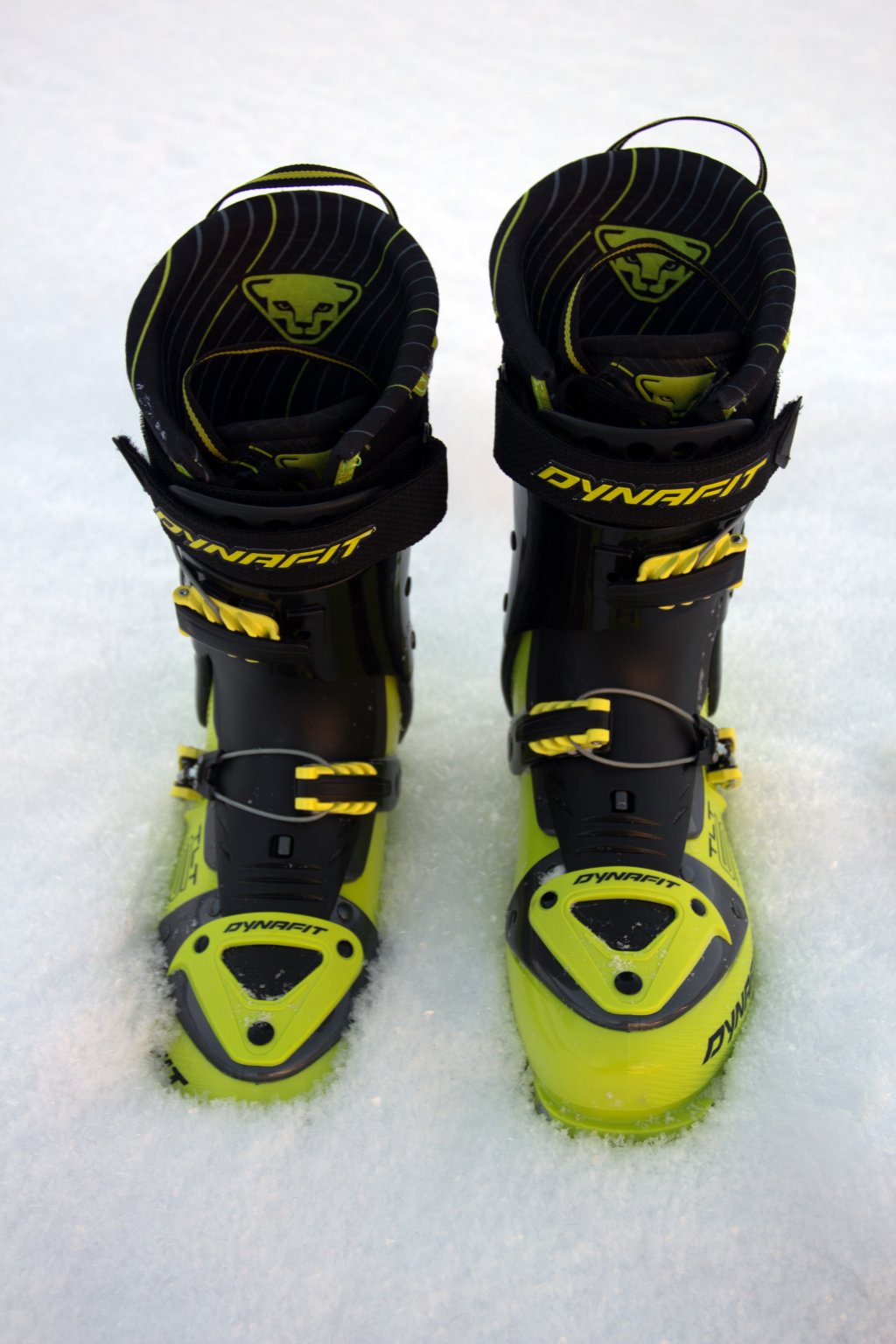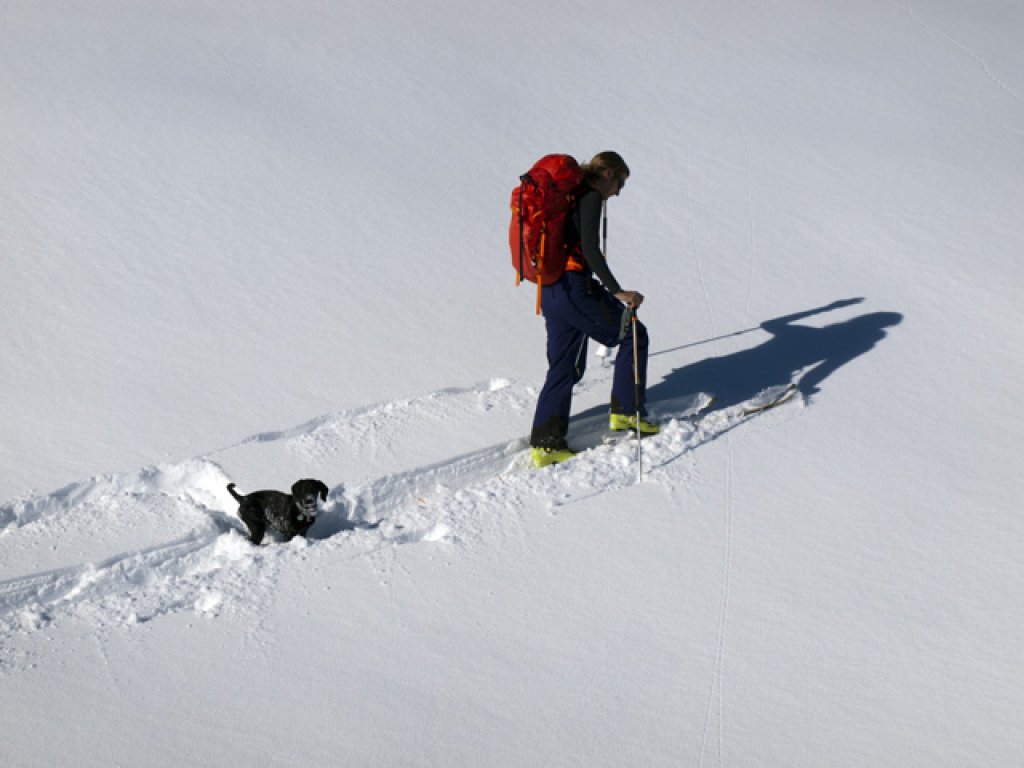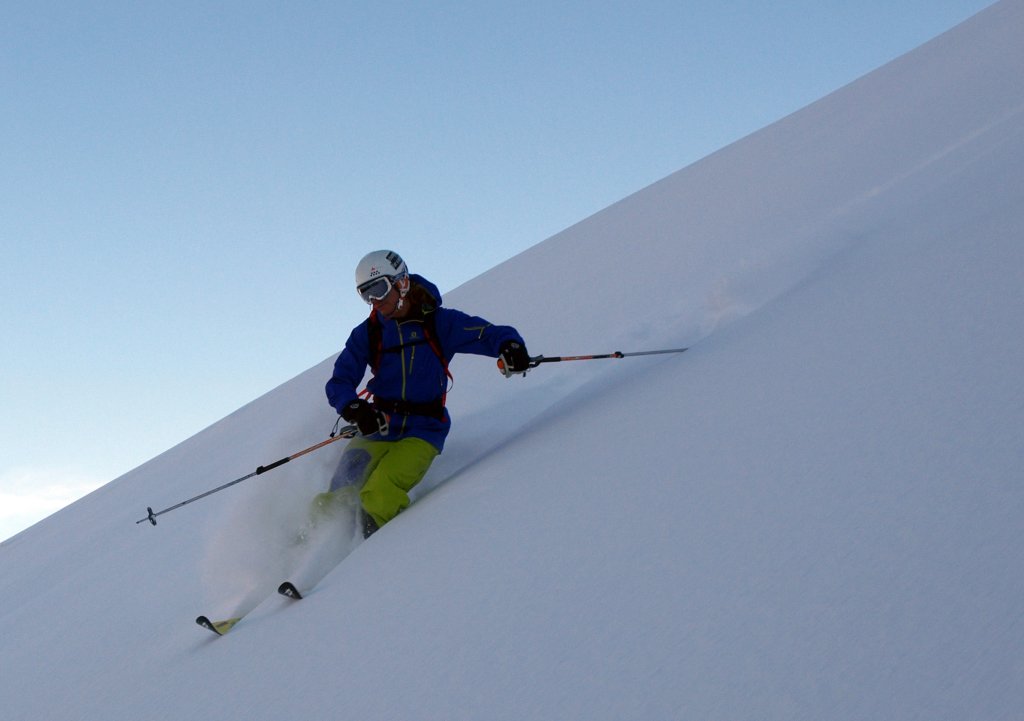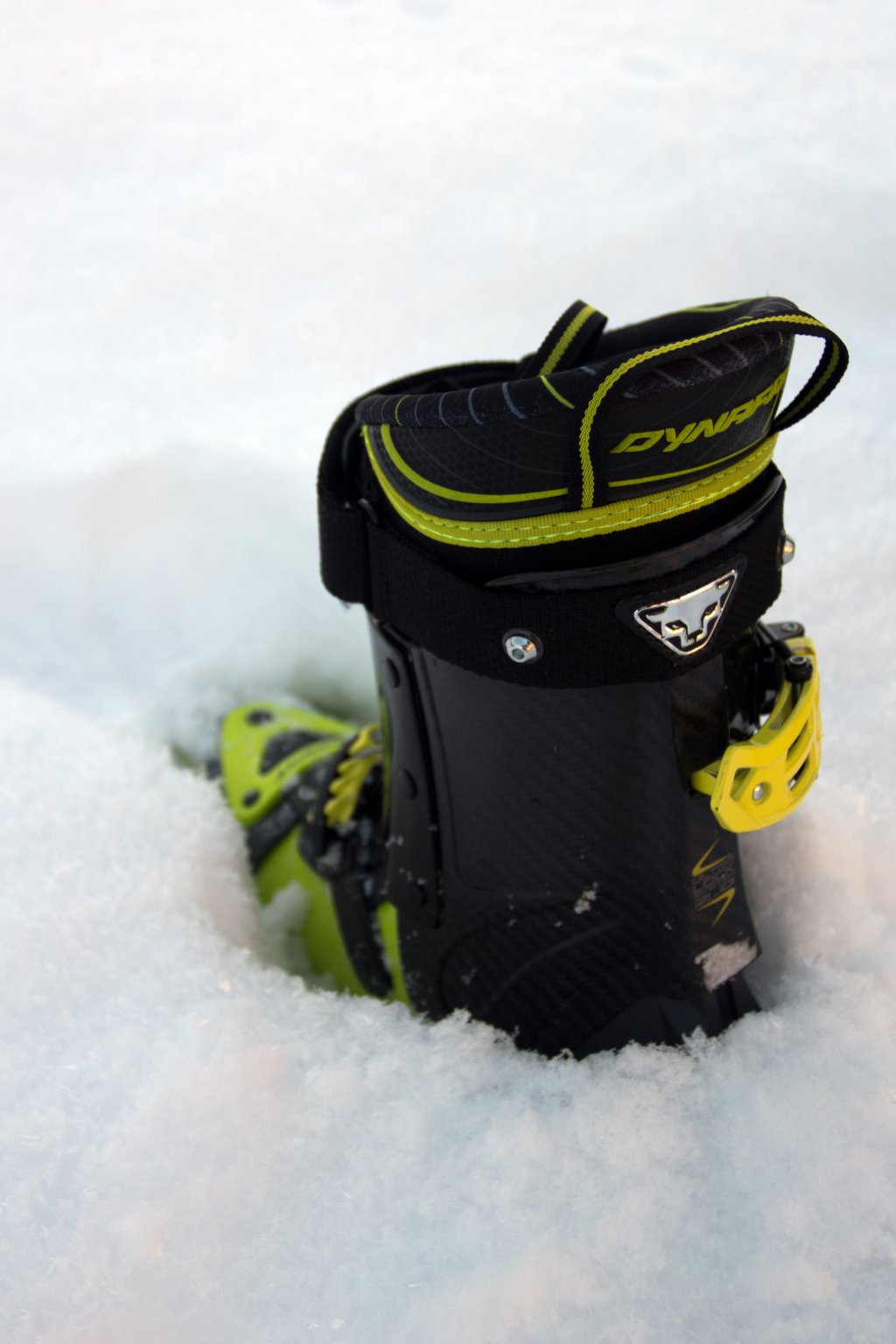The special thing about the TLT6 Performance compared to the TLT6 Mountain version is the upper, which is made entirely of carbon. Although this does not make the shoe any lighter, it achieves significantly greater stiffness in the upper area for the same weight. The shoe also comes with two tongues. The harder, black tongue is really quite hard and designed to be used before the descent and spend the ascent on or in the backpack, while the much softer, green tongue can remain in the boot during the ascent. Of course, the boot can also be skied completely without the tongue.
Inner boot
The inner boot (the CR version tested here, the CL version is more like the inner boot of the old TLT 5) has been significantly improved compared to the TLT5. Not only does it make a much more stable impression, it is also slightly thicker and therefore more comfortable and probably at least a little warmer. The inner boot is adjustable, even if there is not much to do due to the limited material available, and has a standard lacing system. Furthermore, the TLT6 comes with two optional insoles for the liner, which allow it to be adapted to personal needs.
Adjustment
Adjusting the liner worked wonderfully using the familiar method. Further adjustment options include micro-adjusting the two buckles and moving the buckle on the shaft.
Quality
Although the shoe makes a very light and not necessarily ultra-stable impression, I had no concerns about its durability thanks to my experience with the TLT5. The shoe is also now very mature, so I wouldn't expect any quality problems. My main criticism of the TLT5 was the very mediocre liner. The liner of the TLT6 has definitely been improved.
Test
Ascent characteristics
There are actually no differences to the previous model, which was already absolutely brilliant for ascents. Thanks to its incomparably low weight and the large shaft rotation in combination with the short sole length, the TLT 6 also beats the usual ski touring boots popular with freeriders such as the Scarpa Maestrale RS or the Dynafit Vulcan by far. The boot handles like no other (with the exception of its predecessor, the TLT5, and the racing models, which are barely suitable for downhill skiing) - simply in a class of its own! Push in the tongue, close two buckles and the power strap, and you're done. Although the buckles take a little getting used to and are a bit tricky at first, you soon get the hang of them and can operate them just as quickly as with other boots.
Downhill characteristics
The carbon shaft makes the boot really stiff. Especially in combination with the harder tongue, it is too hard rather than too soft for me. However, the flex of the shoe cannot be compared with an alpine shoe. At first, the boot only flexes very little, but the more pressure you put on the shovel and the further forward you flex the boot, the more it flexes. Especially for someone like me, who prefers 3-piece ski boots with a very progressive flex, this is quite unusual.
In addition, there is the very upright angle of the shaft, which, especially in combination with not too wide skis in soft snow, means that you can only put very little pressure on the shovel, otherwise the ski tips will quickly dive away. The central position over the ski is difficult to maintain, especially in the conditions described, and you quickly end up in the backseat.
Overall, however, the positive impression clearly outweighs the negative. The boots also allow high speeds on wide skis. The ski can be steered very directly, especially in poor conditions. Especially on hard but even snow (firn, piste), the boot shows its strengths here and is hardly inferior to any other touring boot. In really good snow, i.e. powder or settled but still soft, older snow, the boot is practically indistinguishable from other, significantly more downhill-oriented models. Even with wide skis, there is really nothing wrong with the control over the ski.
In heavily packed snow or on moguls, the power transmission is almost a little too direct for me, and the mobility in the ankle is also a little limited due to the extremely hard shaft. Of course, the TLT6 is also good downhill here, but the speed has to be slowed down a little.
Final comments
I always use the boot with the hard tongue, but with the softer one it loses some of its downhill performance. You should therefore be prepared to accept that the tongue is fitted at the summit, also because the boot is unnecessarily restricted in its ascent properties with the tongue fitted.
Especially at very low temperatures, you also notice that the boot is slightly less warm than a standard ski touring model. If I don't move for a while and stand in the snow, my feet start to get cold, which doesn't usually happen with me. However, the boot has also improved a lot here compared to the TLT5, where cold feet often occurred.
Conclusion
Very good boot, of course mainly for ascent-oriented tours, but now also suitable for all-round use. Great in good snow! Even wide skis can be mastered well. The downhill characteristics don't have to hide from any other boot (even if the "Freeride" models still have advantages here) and, together with the great walking mode and low weight, make the boot really interesting!
Advantages & Disadvantages
+ extremely light
+ excellent walking mode
+ almost unbelievable downhill performance for the weight
+ extremely direct power transmission
- quite expensive
- somewhat fiddly to use, especially with gloves (especially when fitting the tongue)
- only one (rather flat) angle adjustable
Details
Perfect for fast ascents, climbing passages and technical descents
Flex can be adjusted by the different tongues
Without tongue ideal for training and short ski touring races
Perfect for use with crampons
Very high shaft rotation
Quick change between ski and walk mode
Here's more information from the manufacturer...
Here you can buy the boot at PG-Partnershop...




